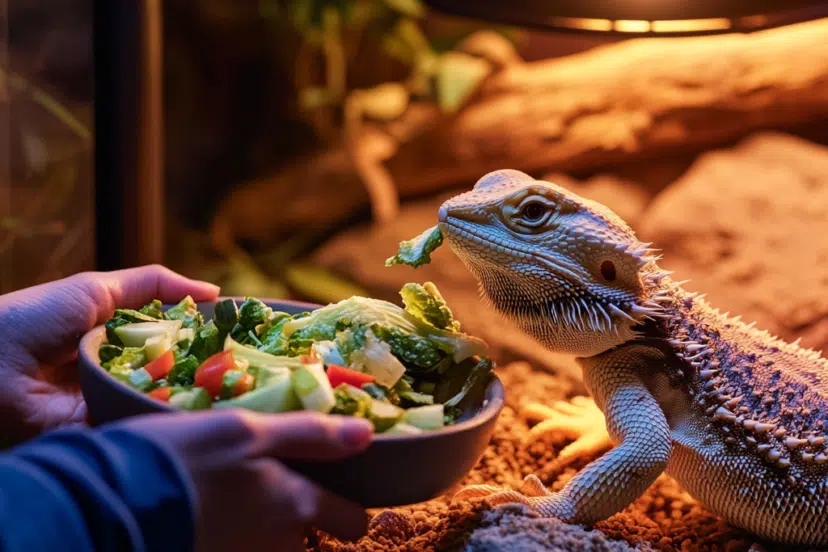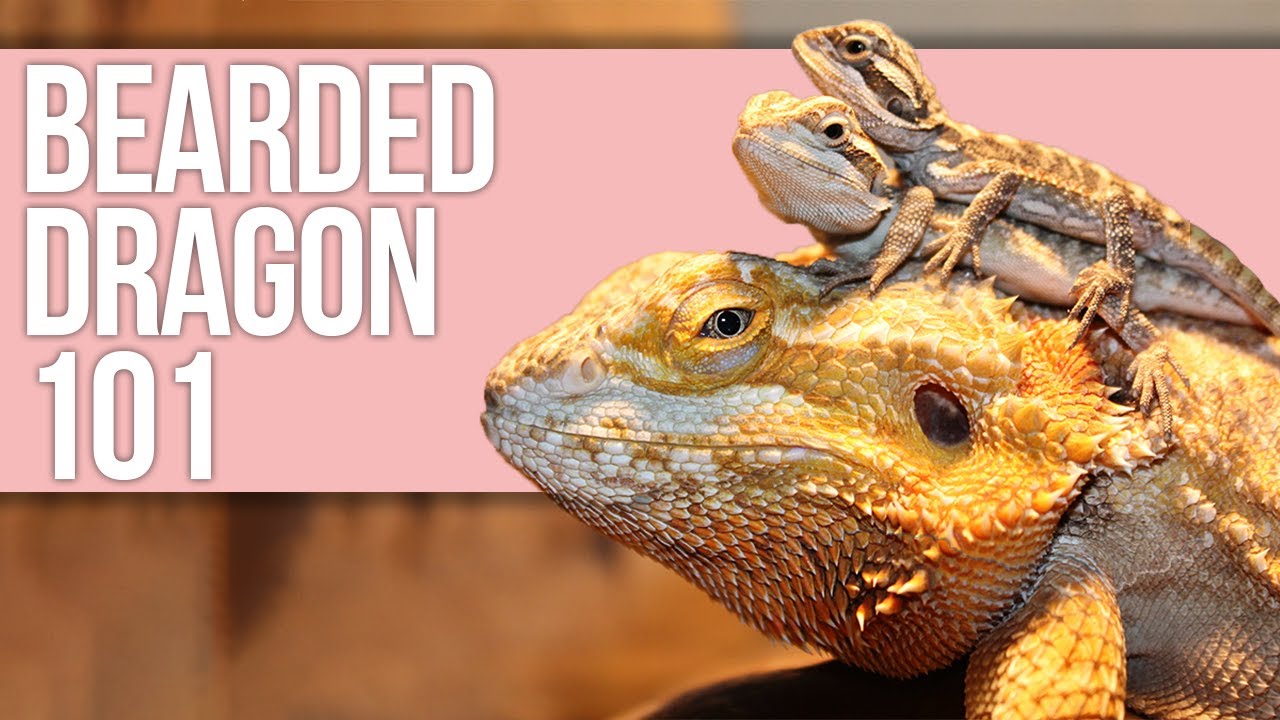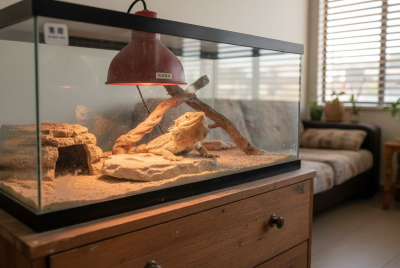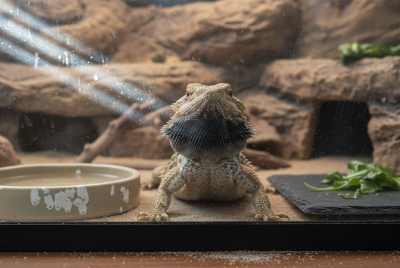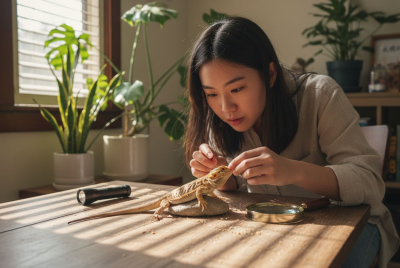Bearded Dragon Care Guide
Bearded dragons are some of the most personable and easy-to-care-for reptiles, making them perfect pets for both beginners and seasoned reptile enthusiasts. But like any pet, they come with specific needs that should be met to ensure they live a long, healthy, and happy life. In this bearded dragon care guide, I’ll walk you through everything you need to know about caring for your bearded dragon, from setting up their habitat to handling them properly and keeping them healthy.
Why Bearded Dragons Are Great Pets
If you’re looking for a pet that’s relatively low-maintenance yet still engaging, bearded dragons are a fantastic choice. These little reptiles have curious and laid-back personalities, and they can even form bonds with their owners over time. Bearded dragons are endlessly fascinating creatures, whether you’re watching them sunbathe, nibble on veggies, or climb around their tank.
Setting Up the Habitat
The first step in bearded dragon care is creating the perfect habitat. This is crucial since a well-maintained environment mimics their natural surroundings, keeping your dragon healthy and stress-free.
Choosing the Right Tank Size
Bearded dragons need space, and the size of their tank will directly impact their well-being. For a baby bearded dragon, you can start with a 20-gallon tank, but as they grow, you’ll need at least a 40-gallon tank. Adult dragons, on the other hand, require at least a 75 to 120-gallon tank. Remember, bigger is always better when it comes to their habitat!
Lighting and Heating Essentials
Creating the right temperature gradient is vital. Bearded dragons are cold-blooded reptiles, so they rely on external heat sources to regulate their body temperature. You’ll need to ensure the tank has both a cool side (around 75-85°F) and a basking side (95-110°F).
UVB Lighting Importance
UVB light is an absolute must. It helps your dragon produce vitamin D3, which allows them to absorb calcium properly. Without UVB lighting, they can develop serious health issues like metabolic bone disease. Make sure to replace your UVB bulbs every six months to ensure they’re still effective.
Heating Elements for Temperature Regulation
For heating, ceramic heat emitters or reptile heat lamps work well to keep the basking area warm. A digital thermometer should be used to regularly check temperatures, ensuring the gradient stays within the right range.
Substrate Selection
The substrate, or the material on the bottom of the tank, is another essential aspect of habitat setup. Some substrates, like loose sand, can cause impaction if ingested, so they’re best avoided.
Safe and Unsafe Substrate Choices
Opt for safer options like reptile carpet, tile, or paper towels, especially for young bearded dragons. These are easy to clean and reduce the risk of impaction. Avoid substrates like calcium sand or crushed walnut, which can be harmful.
Feeding Your Bearded Dragon
Bearded dragons aren’t picky eaters, but they do have specific dietary needs that change as they grow. Knowing what to feed your dragon at different stages of life will keep them thriving.
Diet in the Wild vs Captivity
In the wild, bearded dragons enjoy a variety of insects, plants, and small animals. In captivity, it’s crucial to replicate this balance as much as possible. Juveniles require more protein, while adults should get more vegetables in their diet.
Staple Foods for Bearded Dragons
A bearded dragon’s diet should consist of both vegetables and insects, but the ratio depends on their age.
Vegetables and Fruits
Leafy greens like collard greens, mustard greens, and dandelion greens should be the foundation of their diet. You can also offer small amounts of fruits like blueberries, but make sure they don’t dominate their meals.
Insects and Protein Sources
For protein, crickets and dubia roaches are excellent choices, while mealworms and superworms can be given as occasional treats. Make sure to gut-load the insects before feeding them to your dragon to ensure they’re nutritious.
Supplementing the Diet
Bearded dragons also need supplements to thrive. Calcium powder should be dusted on their food several times a week, especially for juveniles who are still growing. Multivitamin supplements should also be given occasionally to provide essential nutrients.
Hydration and Bathing
Though bearded dragons get most of their hydration from their food, it’s still important to provide fresh water daily. You can also give them baths a few times a week. Bathing helps with hydration, and it’s especially useful during shedding to soften their skin.
Handling and Socializing
Bearded dragons can be quite social and, with patience, can learn to trust you. The key is to handle them gently and frequently to build that trust.
Gaining Your Dragon’s Trust
Start slow by placing your hand in their tank and letting them approach you. With time, they’ll recognize you as a non-threat and may even enjoy being held.
How to Properly Hold a Bearded Dragon
When handling your dragon, always support their body with both hands. Never grab them by the tail or limbs, as this can cause stress or injury.
Health and Wellness Care
Keeping an eye on your dragon’s health is vital to ensuring they live a long and happy life. Bearded dragons are prone to certain health issues, but with proper care, most can be avoided.
Common Health Issues to Watch For
Keep an eye out for signs of lethargy, poor appetite, or abnormal stool, as these can be symptoms of health problems. Also, watch for signs of metabolic bone disease, which can result from calcium deficiencies.
Shedding Process and How to Help
Shedding is a natural part of a bearded dragon’s growth, but it can sometimes be uncomfortable for them. To help, you can give them more frequent baths during shedding to loosen the skin.
Enrichment and Toys for Mental Stimulation
Bearded dragons love to explore, so providing them with enrichment is important for their mental health. You can use logs, branches, or even specialized reptile toys to keep them entertained. Creating climbing opportunities and spaces to hide can also prevent boredom.
Conclusion
Caring for a bearded dragon might seem like a lot at first, but once you have the right setup and routine in place, it becomes second nature. These lovable reptiles have tons of personality and can make wonderful companions for years to come.
FAQs
- How often should I feed my bearded dragon?
Juveniles should eat daily, while adults can eat every other day. - Can I keep two bearded dragons together?
It’s generally not recommended as they can become territorial and aggressive. - How long do bearded dragons live?
With proper care, bearded dragons can live 10 to 15 years in captivity. - Do bearded dragons need regular vet check-ups?
Yes, yearly check-ups are important to catch any health issues early. - How often should I clean my bearded dragon’s tank?
Spot clean daily, and do a deep clean at least once a month.
This guide covers everything from habitat setup to feeding, handling, and health, ensuring you have all the tools needed to care for your bearded dragon.

